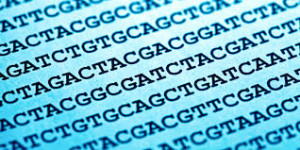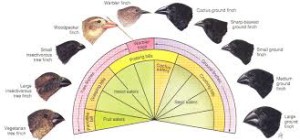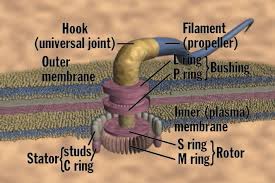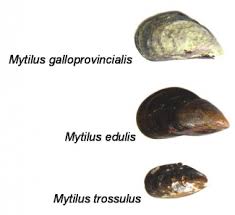“Scientists who go about teaching that evolution is a fact of life are great con-men, and the story they are telling may be the greatest hoax ever! In explaining evolution we do not have one iota of fact.” -Dr. Newton Tahmisian, Atomic Energy Commission
For Darwinian Evolution to be taught as fact in reference to origins, Darwinists need to address the following problems:
1) The origin of first life. Why is there something rather than nothing at all—where did it all come from originally?
2) Life does not consist merely of chemicals. If this were true mixing the chemicals of life would produce life—What is the missing ingredient?
3) There are no known natural laws that produce specified complexity. There is information in the cell that codes for the performance of specific functions—where does this information come from?
DNA coding:
4) There are many human functions and actions that are immaterial. In modern science the search for the cause of origin does not allow for anything immaterial or supernatural, it is built upon a philosophy or presupposition that there is no God. How can you address the immaterial nature of life?
There are only two possible causes for life: A supernatural intelligent cause that demonstrates design and purpose, or a natural one that demonstrates randomness caused by chance conditions—which one has the most reasonable evidence and could lead to the results we see in the design, purpose and diversity of life?
5) Spontaneous generation of life has never been observed. How can something come from nothing? How can non-living materials give rise to living materials?
QUICK VIDEO RESOURCES:
A great source for quick information comes from the Institute of Creation Research who puts out 2-3 minute video clips called “That’s A Fact.” These clips are great for that one minute conversation you may have with someone. It will definitely give them a “stone in the shoe” to ponder, click here: ICR That’s A Fact video collection
Genetic limits:
6) New information needs to be added to the DNA to create a new or different kind of living organism. Adding information to the DNA or the cell itself is genetically impossible from a evolutionary perspective. Where is the evidence of new genetic information being added that creates a new kind of living thing from another kind?
7) Mutations in the genes do not make improvements in the species and almost always has a negative effect. Mutations take away or cause the loss of information in the cell. Where are examples of mutations creating a new kind of living thing. Cancer is caused by mutations in the DNA of the cell, this is an example of a negative effect not a positive one.
8) Cyclical changes within species never produce a new life form. Where is the new kind of living things created by beak size changes, wing size changes or other changes within a species? Birds are still birds, bacteria is still bacteria, and fish are still fish.
9) Irreducible complexity in biological systems and their parts exist in all living things. Where is the evidence of a living thing existing in a transitional stage with missing pieces in their functional parts? These transitional forms would be non-viable in this state and would die out.
All pieces must be there simultaneously otherwise an organism would not survive.
10) Molecular isolation—outside similarities do no match up with inside similarities. How do you get new molecules added to completely different molecules and DNA codes that are isolated inside all of the different kinds of species? Similarity in structure on the outside does not support the dissimilarity of molecular structure internally.
Even though they look similar on the outside, they are molecularly different on the inside:
The fossil record:
11) The fossil record is scare for transitional forms—Morphology (study of the form and structure of organisms) suggests tens of thousands of transitional forms should be seen if evolution was true, and they are not. The Cambrian explosion has exposed that the earliest fossils discovered show body plans identical to what we see today. Dr. David Berlinski, Mathematician and Senior Fellow at the Discovery Institute, Poses this question:
Dr. David Berlinski, Mathematician and Senior Fellow at the Discovery Institute: “How many changes should we see if a complex life form goes, for example, from being a sea dwelling creature to a land dwelling creature?
Most Morphologists suggest that even with a modest estimate you would need roughly 50,000 morphological changes to make that adaptation which requires specific changes in physiological features and evolutionists hold up maybe two. What happened then, to the other 49,998 forms that we should see in the fossil record? We simply do not know, but neither do the other guys.”
There should be 50,000 changes seen between the ascent of man chart promoted in evolutionary theory.
Mathematics—the nail in the coffin:
12) Mathematical probability shows that if you allow for billions and billions of years it is not possible for random chance to cause first life; and even after first life there is not enough time for evolutionary changes to produce new kinds of living organisms from other kinds. Why do evolutionists believe that if enough time is given then eventually life could evolve? Why do evolutionists keep moving their historical timeframe back?
Can moving the clock back ever answer the original origin question anyway?
Walter L. Bradley, Mechanical Engineering Professor at Texas A&M University has said:
“Since evolutionary scientists have estimated the age of the universe at 14 billion years old and the earth being less than 5 billion years old the mathematical odds of assembling a living organism, even if you optimize the conditions here on earth in those early days, wouldn’t work.” If you took all the carbon in the universe and allowed it to chemically react at the most rapid rate possible, and left it for a billion years, the odds of creating just one functional protein molecule would be one chance in 10 with 60 zeros after it!”
What does that number look like?
That’s one chance in…
1,000,000,000,000,000,000,000,000,000,000,000,000,000, 000,000, 000,000,000,000,000
Francis Crick, Nobel prize winner and co-discoverer of the molecular structure of DNA has said:
“To produce the miracle of molecular construction, all the cell needs to do is string together the amino acids (which make up the polypeptide chain of DNA) in the correct order. This is a complicated biochemical process. Suppose the chain is about 200 amino acids long and, since we have just twenty possibilities at each place, the number of possibilities is twenty multiplied by itself some 200 times. This is conveniently written 20 to the 200th power, that is, a 1 followed by 260 zeros? This number is quite beyond our everyday comprehension.”
What does that look like?
To create this one single strand of DNA (by chance) is mathematically one chance in…
1,000,000,000,000,000,000,000,000,000,000,000,000,000,000,000,000,000,000,000,000,000,000,000,000,000,000,000,000,000,000,000,000,000,000,000,000,000,000,000,000,000,000,000,000,000,000,000,000,000,000,000,000,000,000, 000,000,000,000,000,000,000,000,000,000,000,000,000,000,000,000,000,000,000,000,000,000,000,000,000,000,000, 000,000, 000,000,000,000
To simplify the astronomical odds of complex life forms developing over the course of the earth’s history, Chandra Wickramasinghe, Mathematician, Astronomer and Astrobiologist has said:
“The current scenario of the origin of life is about as likely as the assemblage of a 747 by a tornado whirling through a junkyard.” Is this logically possible?
The best evidence for all of these problems can be found in: The Theory of Intelligent Design
William Paley’s Watchmaker Analogy:
In the mid 1800’s William Paley, a British Christian Apologist, coined this argument against Darwin’s theory:
“If you found a rare antique pocket watch lying in the forest and picked it up, examining its complexity and marveling at its unique features, which of the following would you infer?”
- What a creative and intelligent watchmaker there must have been to have made such a beautiful, unique and complex design!
or…
- How fascinating it is that the dirt, leaves and microbes in the area here just happen to evolve, by natural selection, over billions of years into such a beautiful and complex piece!
Intelligent Design is supported by evidence in cosmology, teleology, biochemistry and morality. We will look at this evidence over the next several posts.
***GOOD ARTICLE RESOURCE:
Click this link to read an excellent article called: Does Science Disprove God?
The Apostle Paul: Similarly there are different kinds of flesh—one kind for humans, another for animals, another for birds, and another for fish. –1 Corinthians 15:39
———————————————————————————————————–
You will not find this material in the public school curriculum even though it is based on solid evidence and grounded in research. It is ironic that following the evidence to where it leads stops at the door of our public schools as they will not let a “Divine footprint” in!
Join us this year as we examine evidence for Christianity and learn how to become a thoughtful defender and ambassador of your faith.
Click into the resource page of this website to view many of the top Christian thinkers and apologists along with some of their work; connecting to these types of resources is essential in your Christian growth.
Please let me know what you think: Give feedback, ask questions or send concerns in the comment section of the blog.
Teri Dugan











Sorry, comments are closed for this post.